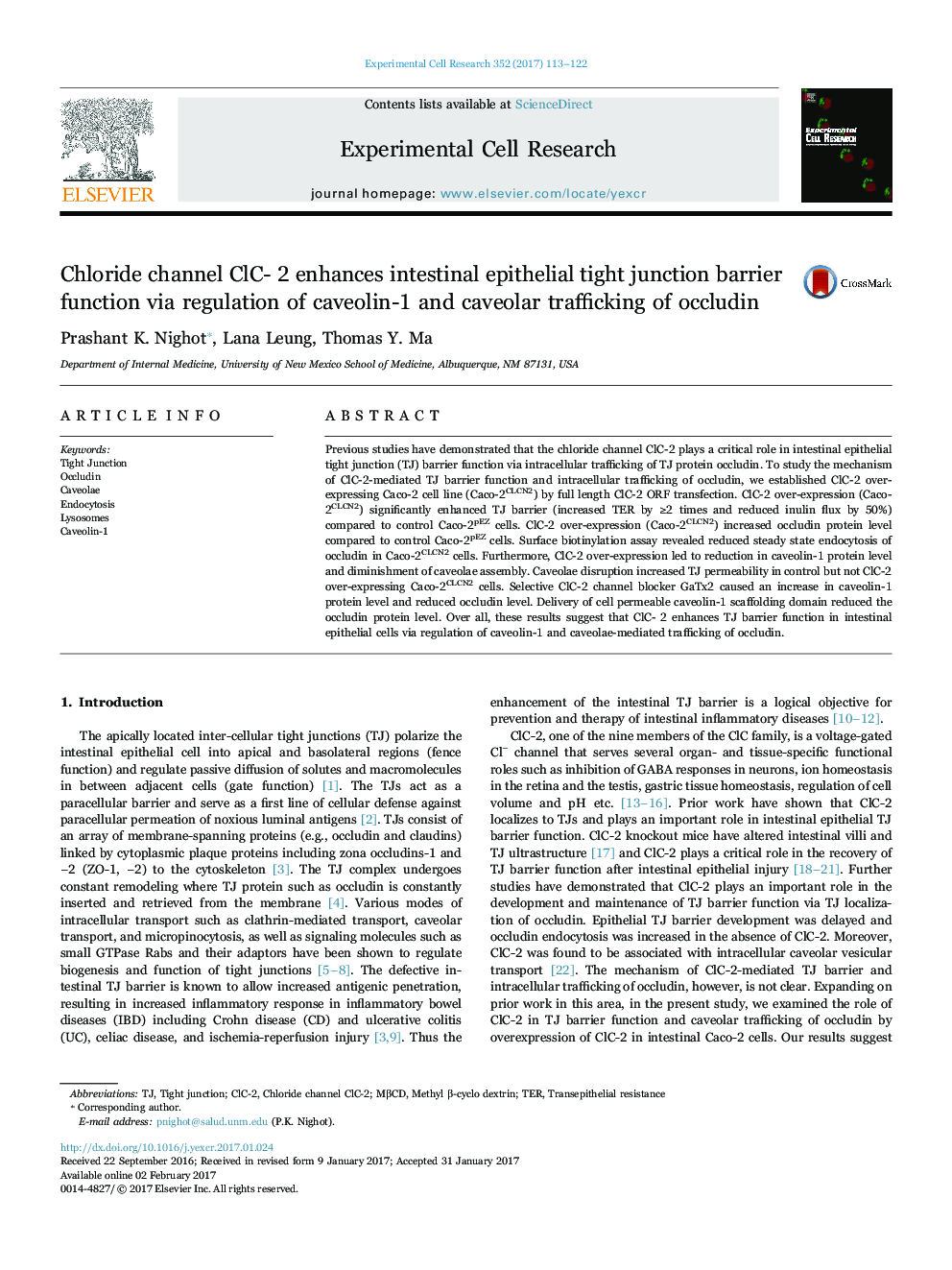| Article ID | Journal | Published Year | Pages | File Type |
|---|---|---|---|---|
| 5527213 | Experimental Cell Research | 2017 | 10 Pages |
â¢The mechanism of chloride channel ClC-2 mediated tight junction (TJ) barrier function was studied.â¢ClC-2 enhances TJ barrier in intestinal epithelial Caco-2 cells via increase in occludin expression.â¢ClC-2 over-expression reduces caveolin-1 expression and diminishes caveolae assembly, resulting in reduced caveolar endocytosis and degradation of occludin.
Previous studies have demonstrated that the chloride channel ClC-2 plays a critical role in intestinal epithelial tight junction (TJ) barrier function via intracellular trafficking of TJ protein occludin. To study the mechanism of ClC-2-mediated TJ barrier function and intracellular trafficking of occludin, we established ClC-2 over-expressing Caco-2 cell line (Caco-2CLCN2) by full length ClC-2 ORF transfection. ClC-2 over-expression (Caco-2CLCN2) significantly enhanced TJ barrier (increased TER by â¥2 times and reduced inulin flux by 50%) compared to control Caco-2pEZ cells. ClC-2 over-expression (Caco-2CLCN2) increased occludin protein level compared to control Caco-2pEZ cells. Surface biotinylation assay revealed reduced steady state endocytosis of occludin in Caco-2CLCN2 cells. Furthermore, ClC-2 over-expression led to reduction in caveolin-1 protein level and diminishment of caveolae assembly. Caveolae disruption increased TJ permeability in control but not ClC-2 over-expressing Caco-2CLCN2 cells. Selective ClC-2 channel blocker GaTx2 caused an increase in caveolin-1 protein level and reduced occludin level. Delivery of cell permeable caveolin-1 scaffolding domain reduced the occludin protein level. Over all, these results suggest that ClC- 2 enhances TJ barrier function in intestinal epithelial cells via regulation of caveolin-1 and caveolae-mediated trafficking of occludin.
